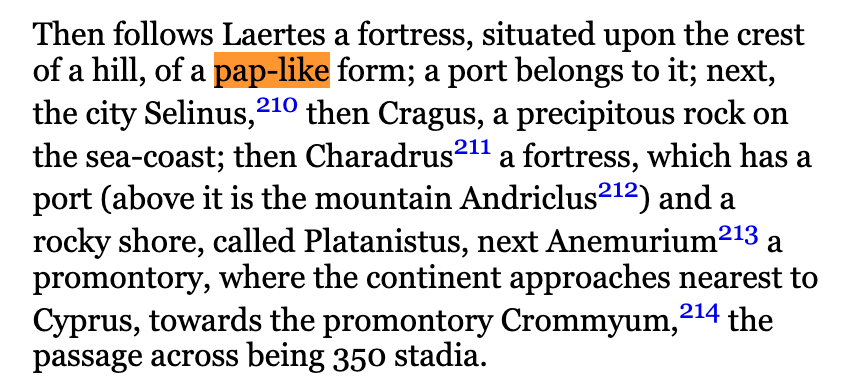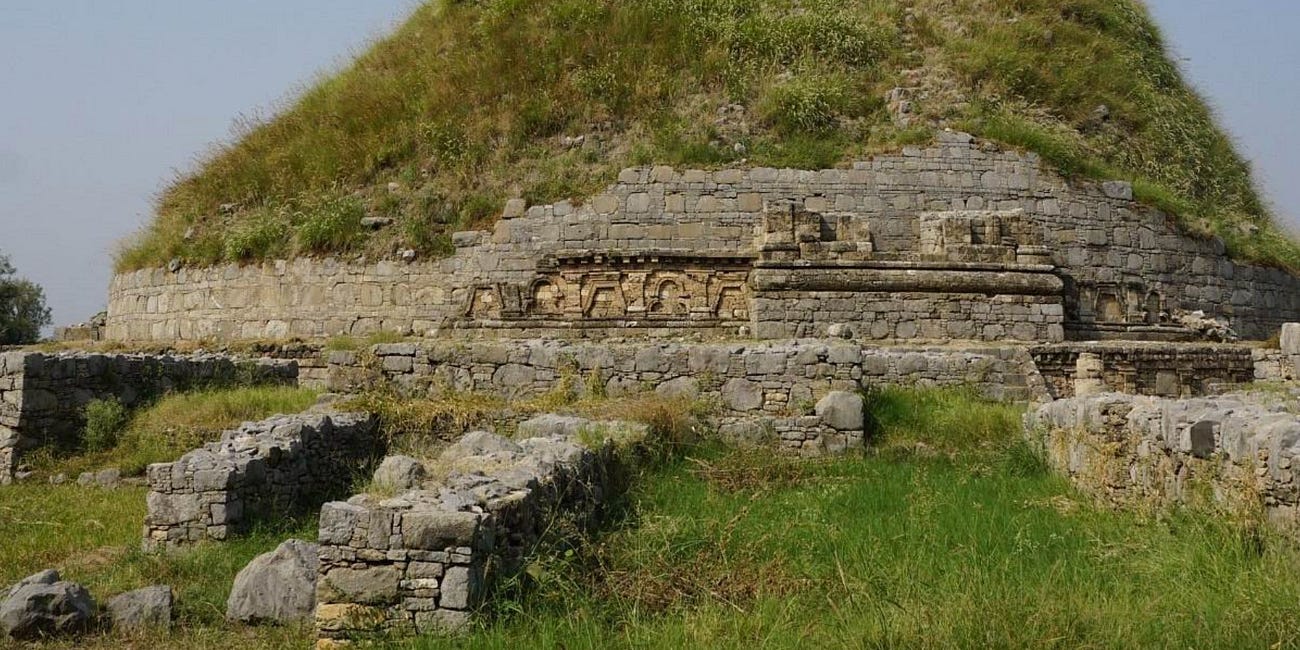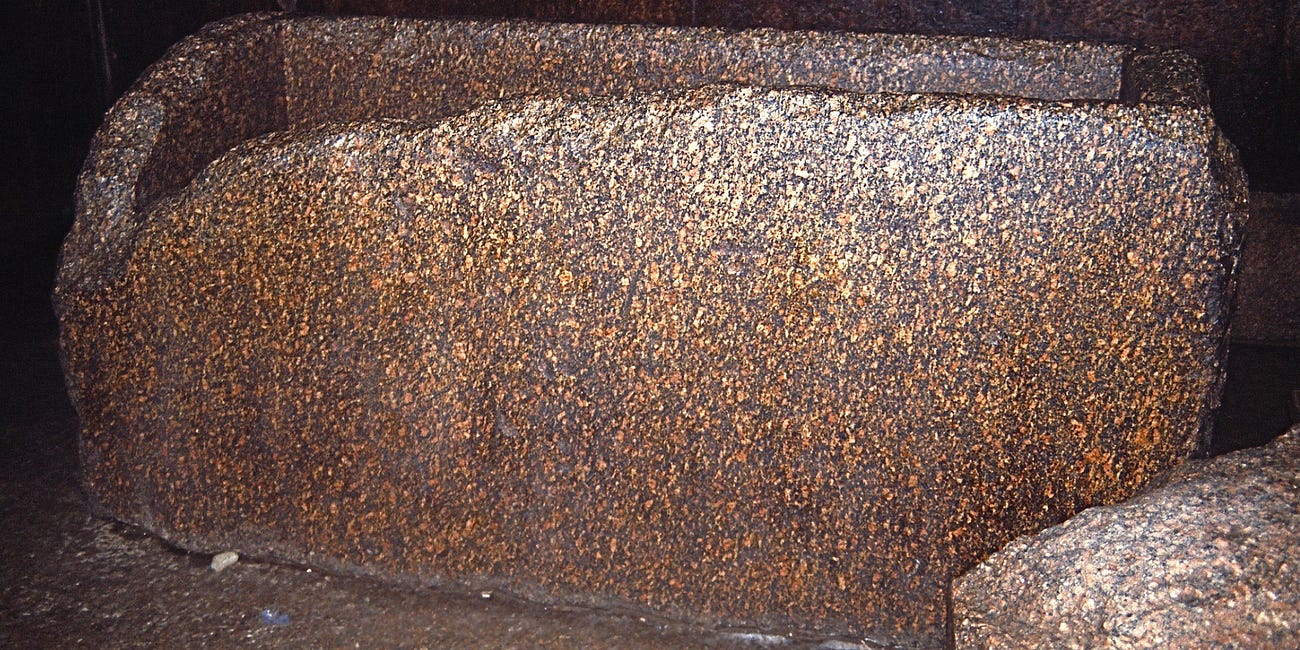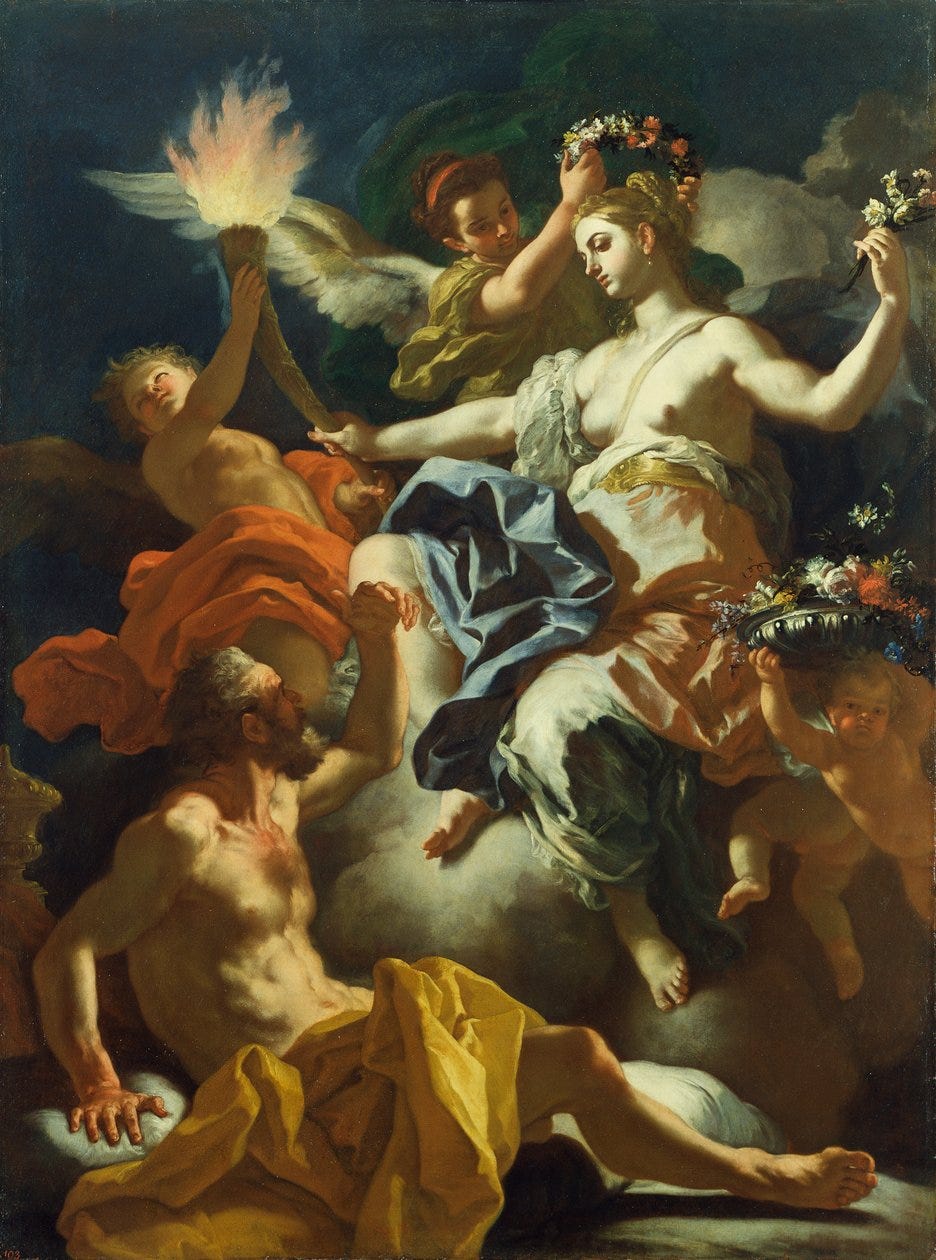Fresh Batch #193: The Children of Chaos & Clouds, Breasts of Fire, & the Allegory of Dragons Guarding Treasures
Amonian Radical Tith, Towers, Etruscans, Centaurs, Gryphons, & More
Reminders:
If you are a new subscriber, make sure to add the email address, which sends you these posts, into your contacts. Otherwise, they will not make it to your inbox after a few posts.
All articles can be listened to through the Substack app for those who don’t prefer to read.
The root of tithe may be a hilarious pun, the religious institution being recipient of ten percent of your pap’s production. Instead of you suckling on the tit of the Church’s production, it suckles on yours. Jacob Bryant wrote (Analys. Anc. Myth. pp. 417-18.), “When towers were situated upon eminences fashioned very round, they were by the Amonians called Tith; which answers to τιτθη (titthe; wet nurse), and τιτθος (titthos; breast) in Greek. (τιτθη, τιτθος, τιτθιον, μαστος. Hesychius.) They were so denominated from their resemblance to a woman’s breast; and were particularly sacred to Orus, and Osiris, the Deities of light, who by the Grecians were represented under the title of Apollo. Hence the summit of Parnassus was named Tithorea from Tith-Or: and hard by was a city, mentioned by Pausanias (L. 10. p. 878.), of the same name; which was alike sacred to Orus, and Apollo. The same author takes notice of a hill near Epidaurus, called Τιτθειον ορος Απολλωνος. (Breast-shaped mount of Apollo. Ορος–ό δη Τιτθειον ονομαζουσιν εφ’ ήμων, τηικαυτα δε εκαλειτο Μυρτιον. A mountain that they called Titheion after us, and that’s why it was called ‘of Myrtles’. Pausanias. L. 10. p. 878.) There was a summit of the like nature at Samos, which is by Callimachus styled the breast of Parthenia: Διαβροχον ύδατι μαστον Παρθενιης. (Callimach. Hymn in Delon. V. 48.) Mounds of this nature are often by Pausanias, and Strabo, termed from their resemblance μαστοειδεις (like a breast, or pap-like as it is translated in two places).
This reminds me of the nature of the tumuli found in Italy and Great Britain. Revisit this article for further explanation.
Fresh Batch #45: Stupas, Tumuli, and Other Forms of Diffusion
Cyrus Gordon wrote (Before Columbus, p. 100), “The alphabet is the most useful single invention made by man throughout all his history. With the ancient cumbersome systems of writing like the Mesopotamian, Egyptian, and Chinese, popular literacy is impossible. The alphabet with such a limited repertoire of signs brought literacy within the grasp of whole nations and made universal education possible.”
Bryant continued (Ib. p. 418.), “Tithonus, whose longevity is so much celebrated, was nothing more than one of these structures, a Pharos (lighthouse) sacred to the sun, as the name plainly shows. Tith-On is μαστος ήλιου, the mount of the Sun. (The Circean promontory in Italy seems to have been named Tit-On; for the bay below is by Lycophron styled Titonian. Τιτωνιον τε χευμα. Titonion the river. V. 1275. Rivers and seas were often denominated from places, near which they flowed.)”
Would you like to guess at where that promontory is located? If you guessed Etruria, in Italy, home of the Etruscans, you’d be correct! WOOOOAAAH BUDDDDDY! Shoutout to Kino Casino:
Would you like to guess what unique structures are found there? If you guessed megalithic polygonal masonry, invented by the Etruscans, mythologized by the ignorant Greeks as Cyclopean, then you’d also be correct!
And yet, even today, as a result of this ignorance, we have modern alternative researchers and historians still refusing to acknowledge this basic fact, despite it being in the historical and archaeological records, that the ancient Italians invented masonry, which is why their techniques are found even in the Great Pyramid.
The question is, why? Why does no one of prominence in modern academia acknowledge that the Etruscans are credited with inventing masonry, and that the diffusion of their maritime empire is found in the form of this masonry?
Revisit Fresh Batch #167 for context regarding the specifics of the Great Pyramid:
Fresh Batch #167: Porphyry
Charles Piazzi Smyth wrote (Our Inheritance in the Great Pyramid, pp. 75, 76.), “Had it nothing more to depend on than its external figure, the Great Pyramid might yet be considered as quite unique, both in the purity of its lines and deep meaning of its angles; for though the second and third pyramids of Jizeh (Giza) do somewhat approach it in form,—they have sensible differences and peculiarities of their own; and before we have got very far away from their neighbourhood, we meet with other pyramids, some of them having distinct re-entering angles half-way down their sides; and others which are built in large inclining steps, known as ‘the pyramids of Degrees;’ and others yet again, more like Indian or Mexican creations; and in such strange shapes at last, as to cease to deserve any classical appellation connecting them with the well-known geometrical solid.
If it be the case that Tithonus is an archetype for a Pharos, or lighthouse, then perhaps this idea of Aurora taking leave of Tithonus is the light going out at the lighthouse, or daybreak making the lighthouse’s fire irrelevant.
Bryant continued (Ib. p. 418.), “As he supplied the place of that luminary (the sun), he is said to have been beloved by Aurora, and through her favor to have lived many ages. This indeed is the reverse of that, which is fabled of the Cyclopes, whose history equally relates to edifices. They are said to have raised the jealousy of Apollo, and to have been slain by his arrows: yet it will be found at the bottom of the same purport. The Cyclopian turrets upon the Sicilian shore fronted due east: and their lights must necessarily have been extinguished by the rays of the rising Sun. This, I imagine, is the meaning of Apollo’s slaying the Cyclopes with his arrows. Tethys, the ancient Goddess of the sea, was nothing else but an old tower upon a mount; of the same shape, and erected for the same purposes, as those above. On this account it was called Tith-Is, μαστος πυρος (breast of fire). Thetis seems to have been a transposition of the same name; and was probably a Pharos, or Firetower near the sea.”
Per usual, the alleged depictions of these archetypes are not easily found supported by inscriptions that confirm the identities, so there is a degree of guesswork that people refuse to admit, which makes it difficult to display accurate images, so I’ll leave it to you to search on your own.
For those interested in learning about this ancient system of language, symbolism, and subsequently priestcraft and cultural diffusion, invest in the Spirit Whirled series, and then The Real Universal Empire.






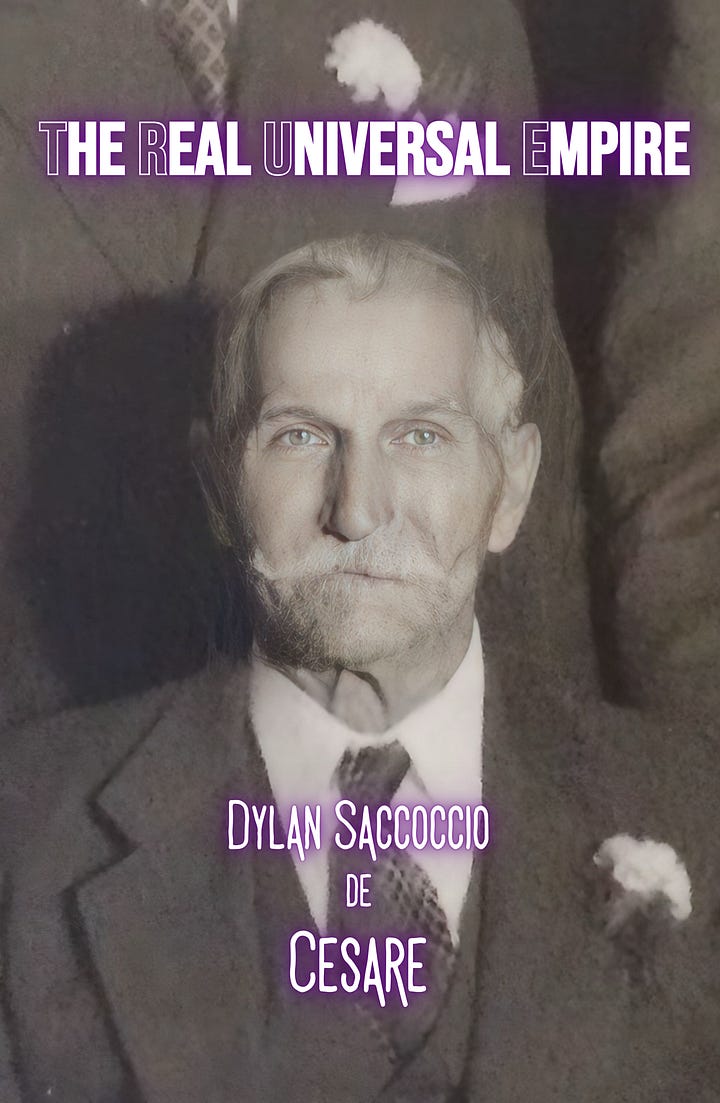
Become a member to access the rest of this article.
Keep reading with a 7-day free trial
Subscribe to Ancient History, Mythology, & Epic Fantasy to keep reading this post and get 7 days of free access to the full post archives.








